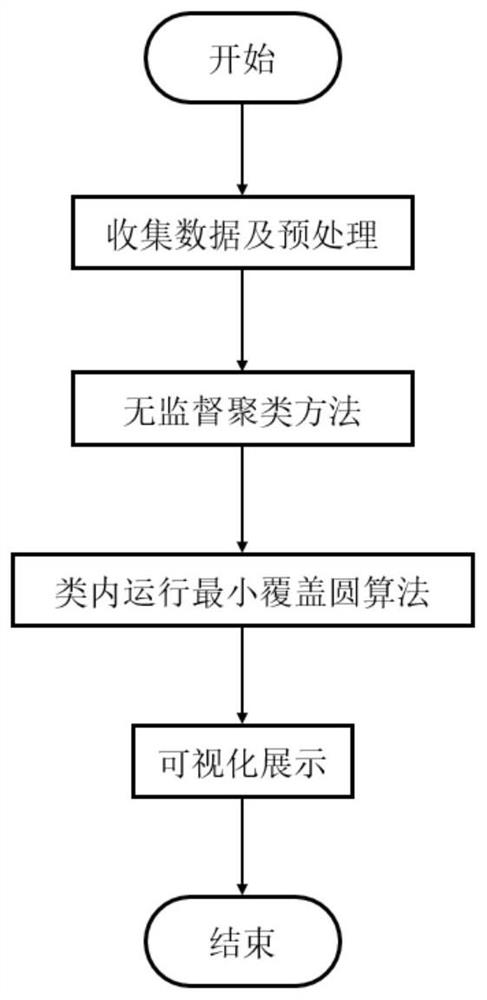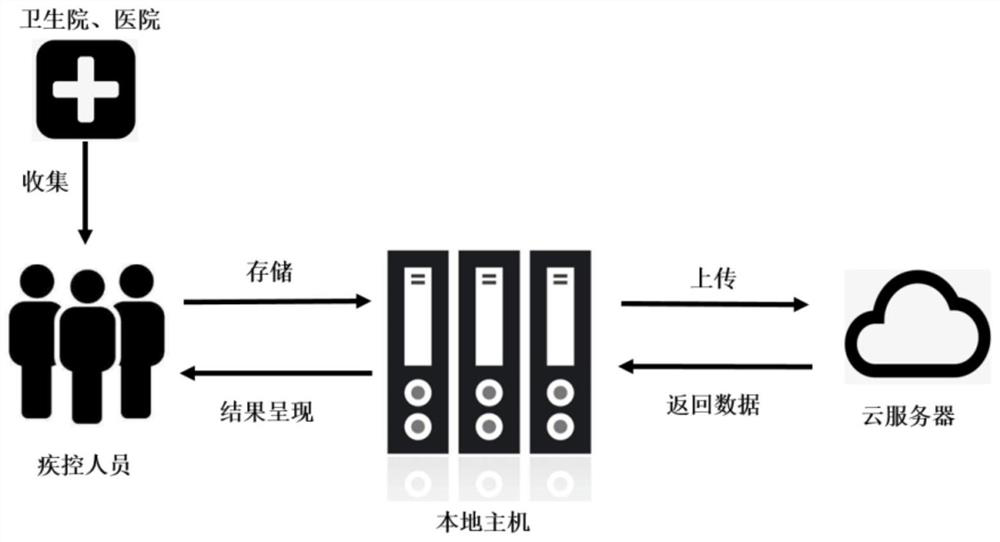A method for marking the range of febrile populations of mosquito-borne infectious diseases based on spatial aggregation
A labeling method and technology for infectious diseases, applied in the field of labeling of mosquito-borne infectious disease fever populations, can solve problems such as the inability to directly obtain the development trend of the epidemic, the increased burden of mosquito-borne disinfecting work, and the large workload of data collection, etc. The effect of early prevention and late epidemic handling capabilities, narrowing the scope of disease control, and enhancing the ability to describe
- Summary
- Abstract
- Description
- Claims
- Application Information
AI Technical Summary
Problems solved by technology
Method used
Image
Examples
Embodiment Construction
[0043] In order to make the purpose, technical solution and advantages of the present invention more clear, the present invention will be further described in detail below in conjunction with the accompanying drawings and examples. It should be understood that the specific embodiments described here are only used to explain the present invention, not to limit the present invention. In addition, the technical features involved in the various embodiments of the present invention described below can be combined with each other as long as they do not constitute a conflict with each other.
[0044] The basic idea of the present invention is to comprehensively collect the information of febrile populations of insect-borne infectious diseases, carry out non-parametric clustering on individuals according to the spatial position information of febrile populations, realize the area calibration of febrile populations within the class based on the minimum covering circle algorithm, and c...
PUM
 Login to view more
Login to view more Abstract
Description
Claims
Application Information
 Login to view more
Login to view more - R&D Engineer
- R&D Manager
- IP Professional
- Industry Leading Data Capabilities
- Powerful AI technology
- Patent DNA Extraction
Browse by: Latest US Patents, China's latest patents, Technical Efficacy Thesaurus, Application Domain, Technology Topic.
© 2024 PatSnap. All rights reserved.Legal|Privacy policy|Modern Slavery Act Transparency Statement|Sitemap



